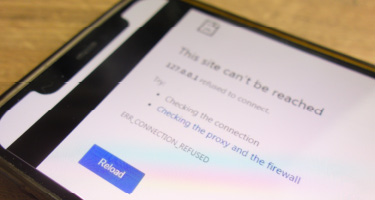Co-written by H. Arthur Bolick
The COVID-19 pandemic is impacting every facet of the economy, including commercial construction and real estate. While the depth of some of the impacts may not be known for months, if not years, there are several emerging trends shaping these industries now.
Construction Financing Issues
In the early days of the COVID-19 pandemic this spring, many companies looked at stopping, or at least pausing, construction projects due to the uncertainty about the economy. Many projects remain paused as owners continue to worry about their long-term viability or if there is demand for office or retail space when so many businesses are closed or people are working remotely.
A survey conducted by the Associated General Contractors of America (AGC) in June found that 68% of contractors had seen a project canceled as a result of the COVID-19 pandemic; 48% saw a project that had begun before the pandemic halted.
While some projects were paused to meet with shelter-in-place orders in states and cities where construction was not deemed essential, financial considerations also were a major concern. More than one-third of projects were stopped because of a loss of revenue to pay for the project, whether that be from lenders, investors or government revenue such as taxes.
Under many contracts, if an owner decides to pause construction, it will ultimately be responsible to pay the contractor for the delay. Similarly, if an owner cancels a project, under the standard American Institute of Architects (AIA) contract documents, the owner will be responsible for a termination fee or the contractor’s lost profit on the project. With project financing also drying up, however, it may be uncertain where that funding will be coming from.
With projects on pause, banks are also seeing an increase in defaults on construction loans. Construction loan delinquencies at U.S. banks climbed 23.8% during the first quarter according to the Standard & Poor’s Global Market Intelligence Report. Anticipating this, the $2.2 trillion Coronavirus Aid, Relief, and Economic Security Act (CARES) passed by Congress made it easier to modify construction loans. Under the CARES Act, an owner may qualify for a forbearance arrangement, an interest rate modification, or a revised repayment plan. The CARES Act also provides that any loan modification does not constitute a reportable troubled debt restructuring (TDR) or a default, and therefore will not negatively impact the credit of the borrower.
Construction Supply Chain Issues
One major challenge impacting still ongoing construction projects is difficulty in getting the needed materials on time. During the peak of COVID-19 shut downs this spring, many producers of building supplies either closed completely as they were not deemed “essential businesses” by their local governments or reduced their staffing and capacity to help support social distancing efforts among employees. This has led to a shortage in numerous supplies and ongoing supply chain issues.
In June, the ACG found that 25% of contractors were experiencing project delays or disruptions due to a shortage of construction materials, equipment or parts. Additionally, 38% of respondents said suppliers had notified them or their subcontractors that material deliveries would be late or cancelled.
Depending on the materials being delayed, supply chain disruptions can impact the timing of a construction project by days, weeks, even months—time that in many cases cannot afford to be lost as contractors often face tight deadlines for delivering projects.
To help minimize disruption, contractors should request weekly updates from suppliers on the availability of necessary materials. A contingency plan for obtaining materials that may face shortages or delays should be developed. Contractors should also provide updates, in writing, to their clients both on potential supply chain issues and the steps that are being taken proactively to mitigate those risks and, if needed, look to renegotiate potential changes to the project completion schedule.
While it is generally the responsibility of the contractor to ensure a project is completed on time, there may be some contractual remedies for unexpected supply chain delays caused by the COVID-19 pandemic. For example, many contracts contain force majeure clauses or other language around impacts arising from circumstances that could not be foreseen or outside of the control of either party involved in the contract. Often these clauses call for an extension of time to complete the project but may not change the payment terms.
Lease Issues
The pandemic is also triggering force majeure clauses in commercial leases. A June bankruptcy court ruling in In re: Hitz Restaurant Group offers some guidance to landlords and tenants seeking to enforce force majeure language in their leases.
Hitz Restaurant Group, which operates a number of restaurants around Chicago, filed for bankruptcy on Feb. 24, 2020. One of its landlords, Kass Management Services, Inc., asked the court to require Hitz to pay rent due under the lease even after filing for bankruptcy. Citing force majeure language in the lease, Hitz argued that it was excused from the rent obligation as a result of the executive order prohibiting on-premises consumption of food and beverages in restaurants issued by Illinois Governor J.B. Pritzker on March 16, 2020.
The court ruled that Hitz had to pay its full March rent, since it was due before the executive order was issued, but the obligation to pay rent thereafter was reduced in proportion to the ability of Hitz to generate revenue. Based on Hitz’s estimate that 75% of the restaurant was unusable due to the executive order, Hitz only owed 25% of its rent obligations for April, May and June. The court also rejected the landlord’s argument that Hitz could not enforce the force majeure clause because it did not apply for a Small Business Administration loan to meet its rent obligations.
In reaching its decision, the court found the force majeure clause in Hitz’s lease unambiguously applied to rental payments and the executive order was the cause, at least in part, of Hitz’s inability to pay rent because it restricted the restaurant to take-out, curbside pick-up, and delivery.
Although the Hitz decision is not binding in other jurisdictions, other courts may use a similar analysis for businesses required by law to shut down or reduce operations during the pandemic. Tenants should review their leases to see if the force majeure clause specifically references governmental orders and allows for excused performance of lease obligations, including payment of rent. For landlords, the Hitz case is a reminder to carefully draft force majeure clauses to allow for more time to pay rent, instead of excusing payment altogether or to include express language that force majeure does not apply to rent.
Regardless of how long the COVID-19 pandemic lasts, or how long the residual economic effects linger, it is likely this pandemic will create a lasting impact on the commercial construction and real estate market. What those changes are remains to be seen, but it will be vitally important that contractors, building owners and tenants more carefully consider things like force majeure clauses and their potential impact on contracts long into the future.































